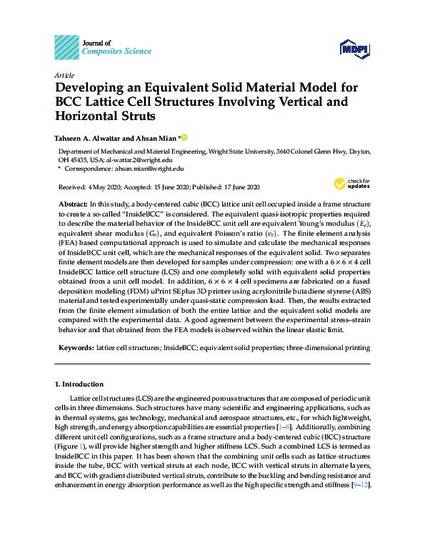
In this study, a body-centered cubic (BCC) lattice unit cell occupied inside a frame structure to create a so-called “InsideBCC” is considered. The equivalent quasi-isotropic properties required to describe the material behavior of the InsideBCC unit cell are equivalent Young’s modulus ( E e ) , equivalent shear modulus ( G e ) , and equivalent Poisson’s ratio ( ν e ) . The finite element analysis (FEA) based computational approach is used to simulate and calculate the mechanical responses of InsideBCC unit cell, which are the mechanical responses of the equivalent solid. Two separates finite element models are then developed for samples under compression: one with a 6 × 6 × 4 cell InsideBCC lattice cell structure (LCS) and one completely solid with equivalent solid properties obtained from a unit cell model. In addition, 6 × 6 × 4 cell specimens are fabricated on a fused deposition modeling (FDM) uPrint SEplus 3D printer using acrylonitrile butadiene styrene (ABS) material and tested experimentally under quasi-static compression load. Then, the results extracted from the finite element simulation of both the entire lattice and the equivalent solid models are compared with the experimental data. A good agreement between the experimental stress–strain behavior and that obtained from the FEA models is observed within the linear elastic limit.
Available at: http://works.bepress.com/ahsan-mian/94/
